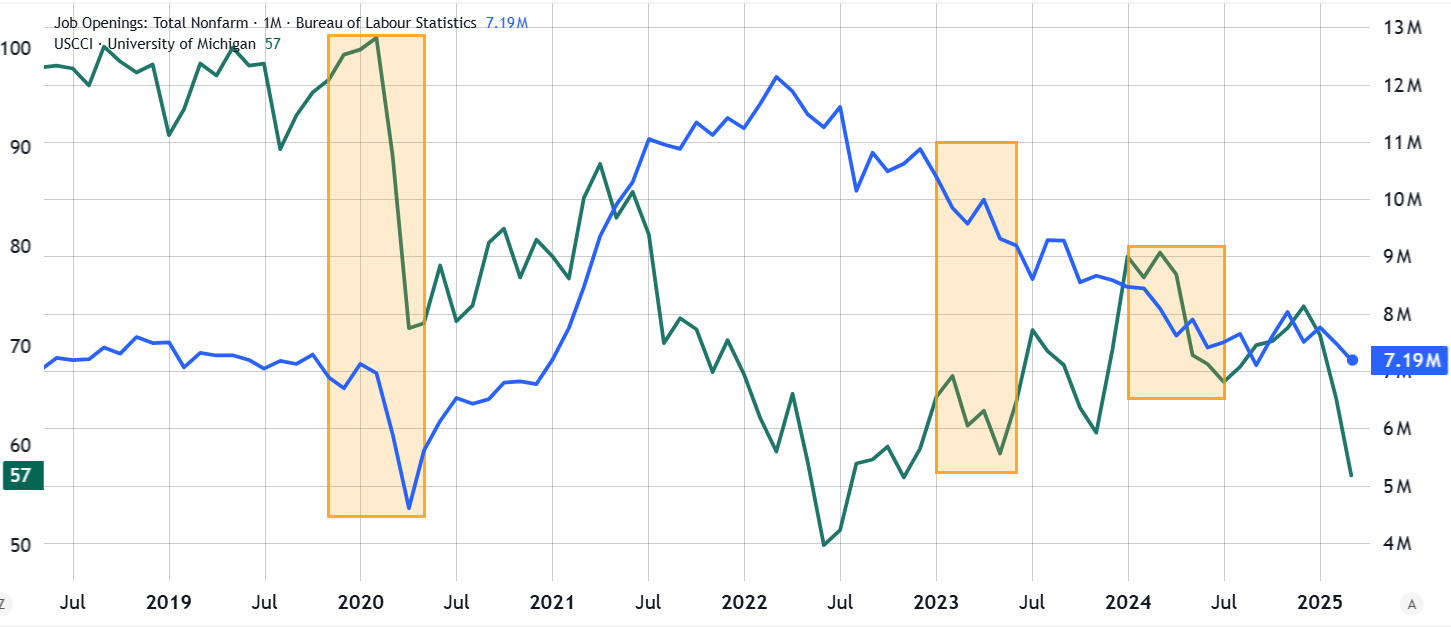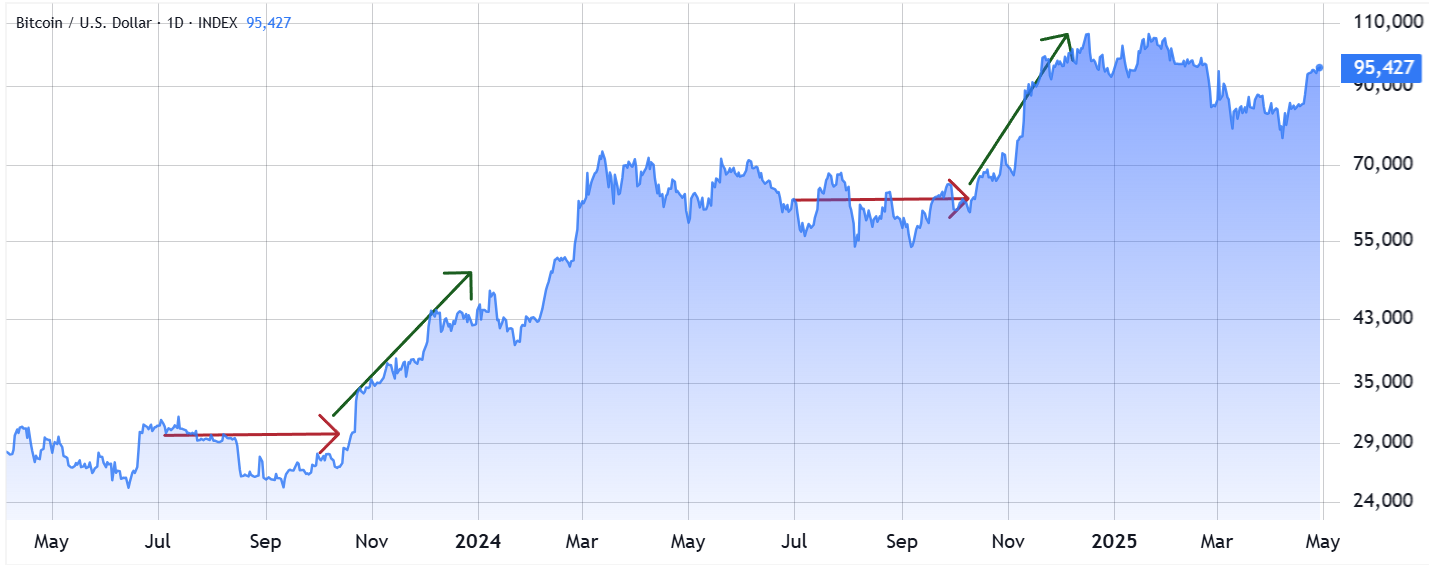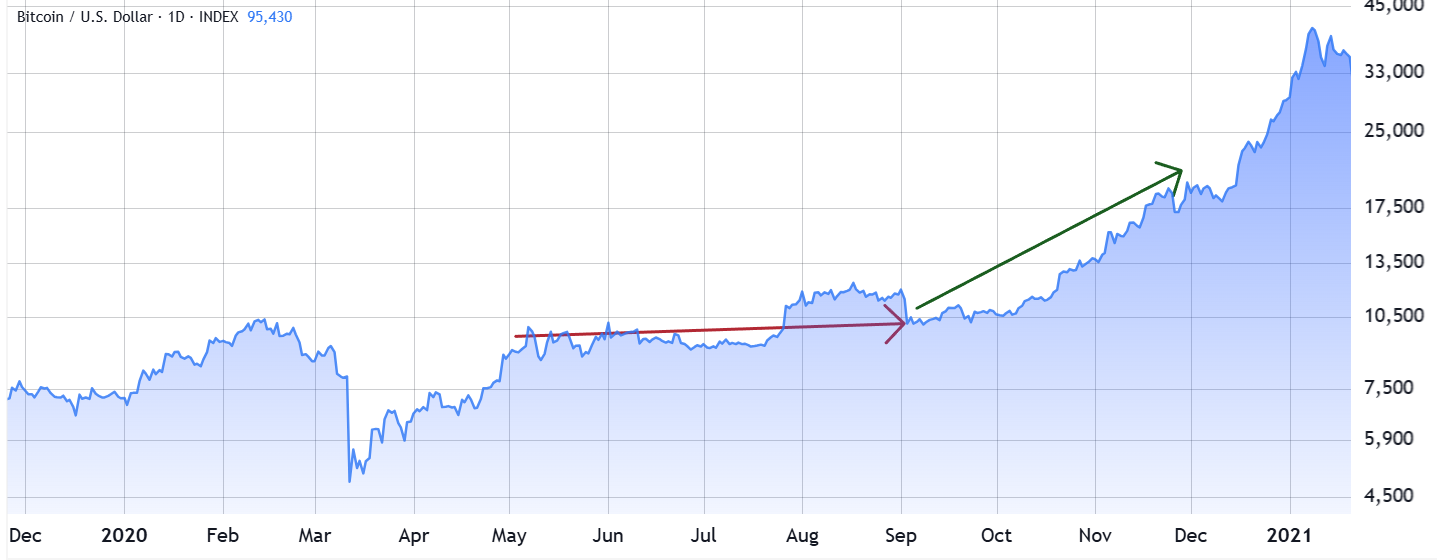Author:Marcel Pechman
Translated by: TechFlow
Today's JOLTS (Job Openings and Labor Turnover Survey) report shows a sharp decline in US job vacancies, but this may not be bad news for Bitcoin.
Key Information:
Weak labor and consumer data typically signal Bitcoin's rise, with some analysts predicting potential economic stimulus measures.
Job vacancies in March dropped to 7.2 million, below the expected 7.5 million, while consumer confidence index fell to its lowest level since January 2021.
If past patterns continue, Bitcoin may rise in mid-July and is expected to reach $140,000 in October 2025.
Macroeconomic conditions have long been considered a major influence on cryptocurrency prices. Typically, Bitcoin and other cryptocurrencies perform poorly when investors are concerned about weak employment and consumer data.
According to the JOLTS report released by the US Department of Labor on April 29, job vacancies in March were near a four-year low. US employers posted 7.2 million job vacancies in March, below economists' predictions of 7.5 million. Meanwhile, US consumer confidence declined for the fifth consecutive month in April, reaching its lowest point since January 2021.

US Consumer Confidence (left) and US Non-Farm Job Opportunities (right)
Source: TradingView/Cointelegraph
The worsening situation increases the likelihood of central bank economic stimulus measures, making the overall impact on the cryptocurrency market uncertain. Typically, additional liquidity encourages investment in risky assets like Bitcoin, as more money flows into the economy.
Future Expectations More Important Than Current Weak Economic Data
The last time the US experienced a reduction in job vacancies and consumer confidence was between January and June 2024. In the following three months, Bitcoin's price fluctuated between $53,000 and $66,000. Then, starting from mid-October, it saw a 60% increase, pushing Bitcoin's price above $100,000. The final result was positive, but this impact took over 105 days to manifest in the cryptocurrency market.

Bitcoin/USD, Logarithmic Scale
Source: TradingView / Cointelegraph
While these conditions may initially seem concerning, weak labor and consumer sentiment are typically lagging indicators. Financial markets and companies make decisions based on expectations of future economic growth, not just past data. Additionally, cryptocurrency investor sentiment tends to improve after confirmation of macroeconomic conditions improving. This explains why a 105-day lag is not uncommon.
Before 2024, a similar situation occurred between January and June 2023, with job market data and consumer confidence declining. The next four months were challenging, with Bitcoin's price dropping 18% to $25,000. The price recovered to $30,500 at the end of October, 115 days later. However, the next two months were very positive, with Bitcoin rising 45% to $43,900.

Bitcoin/USD in 2020, Logarithmic Scale
Source: TradingView / Cointelegraph
In the past eight years, the last time the labor market and consumer confidence were significantly challenged was between February and May 2020, following the implementation of COVID-19 lockdown measures. During this period, Bitcoin briefly fell below $4,000 on March 13, 2020. Therefore, the market expected a longer consolidation period before investors would regain confidence in the crypto market.
Can Bitcoin Reach $140,000 Before October?
Looking back at macroeconomic data, from May 2020 to September 2020, Bitcoin was not significantly impacted, with its price rising from $8,900 to $10,600, an increase of 20%. However, in the next 60 days, Bitcoin saw an impressive 85% surge, reaching $19,700. This is the third time weak labor and consumer sentiment data seemed to signal a Bitcoin price increase.
While the time span between the economic conditions' lowest point and Bitcoin's rise is 105 to 130 days, the results were clear in all three cases. Therefore, if US job vacancies and consumer confidence begin to improve from April 2025, Bitcoin's price may start rising in mid-July. If history repeats itself, this could mean a minimum target price of $140,000 by October 2025, though further positive macroeconomic data is needed to confirm this expectation.








